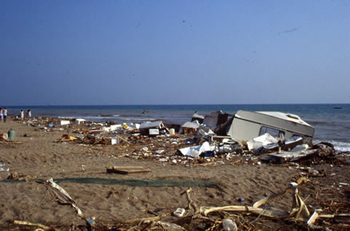

Guidelines for submitting articles to San Javier Today
Hello, and thank you for choosing sanjavier.today to publicise your organisation’s info or event.
San Javier Today is a website set up by Murcia Today specifically for residents of the urbanisation in Southwest Murcia, providing news and information on what’s happening in the local area, which is the largest English-speaking expat area in the Region of Murcia.
When submitting text to be included on San Javier Today, please abide by the following guidelines so we can upload your article as swiftly as possible:
Send an email to editor@spaintodayonline.com or contact@murciatoday.com
Attach the information in a Word Document or Google Doc
Include all relevant points, including:
Who is the organisation running the event?
Where is it happening?
When?
How much does it cost?
Is it necessary to book beforehand, or can people just show up on the day?
…but try not to exceed 300 words
Also attach a photo to illustrate your article, no more than 100kb

Mazarrón history, the Bolnuevo Gota Fría of 1989
1,300 cubic metres of water per second poured down the Rambla in Bolnuevo before it burst its banks
 Following from the heat of summer the risk of "gota fría" storms is especially high in September and October, and councils clear local "ramblas" (flood channels), repair the signs warning people not to park in them and dig out the leaves from sewers and drains in case the heavens open.
Following from the heat of summer the risk of "gota fría" storms is especially high in September and October, and councils clear local "ramblas" (flood channels), repair the signs warning people not to park in them and dig out the leaves from sewers and drains in case the heavens open.
Traditionally these torrential downpours are referred to as "la gota fría" ("the drop of cold water"), although nowadays the preferred meteorological terminology is "areas of isolated high level depression", but whatever you call them they are a noticeable feature of the weather, life and history of Murcia.
Late summer storms are normally welcome, bringing relief to parched crop fields and gardens and a break in the monotonous heat of summer, but these exceptional weather conditions prevail can be lethal, as Mazarrón knows all too well.
7th September 1989 was a typical late summer day, warm and muggy, and beachgoers were constantly in and out of the water in an effort to keep cool. As the day wore on, clouds began to build and the wiser went home as rain began to fall. Further inland, even more downpours were falling on the mountains, and the flood channels or "ramblas" began to fill as the torrential rain showed no sign of abating.
When the full force of the run-off in the Rambla de las Moreras reached the area of Mazarrón the flow is estimated to have been 1,300m3 per second, and the waves were a couple of metres high.
On reaching the flatter land towards Bolnuevo the water accumulated and broke the banks of the rambla, with horrendous results. Roads and crops were obliterated, but the worst of the devastation was in the campsite at the entrance to Bolnuevo, which was completely washed away.
Caravans and tents were flushed into the rambla and the sea by a wall of mud and water as all the rain from the 266 km2 area which feeds into the rambla descended on the beach. Scenes have been described by eye-witnesses as hellish. Fishing boats went out to rescue many of the campers who had been caught by surprise.
Official statements report the loss of two lives, but local lore contends that the actual death toll was higher as unregistered campers went missing.
In economic terms the damage was calculated at 2,300 million pesetas (about 14 million euros), and Mazarrón was declared a disaster area.
Years later the events of that day are still remembered, and many believe that the scars will take a long time to fully heal, especially given the belief that the real death toll was far higher. All the campsite records were lost in the flood and no-one knows exactly how many people were there at the time. It may be a conspiracy theory, but some believe the authorities were simply too shocked to admit the real scale of the disaster.
The remnants of caravans are still found by divers in the bay to this day, and locals tell of how bodies were being washed up on the shore days later. How much of this is embellished in the telling we cannot know.
The current campsite is alongside where the old one was located, a little further away from the rambla, and many campers have reported paranormal sightings at night, perhaps lost souls searching for their loved ones or their belongings. These sightings have never been corroborated, but whether they are real or not it is certain that the events of 1989 still haunt the minds of the locals in Bolnuevo, and every year on this date people look anxiously at the sky, hoping not to see storm clouds and remembering those who perished 22 years ago.
Since this event occurred, measures have been taken to reinforce ramblas, create water run-offs and ensure adequate preparations are made for the worst eventualities.
However, ramblas still claim many lives every year throughout Spain and cars are frequently washed into the seas along the Spanish coastline during Gota Fría season.
